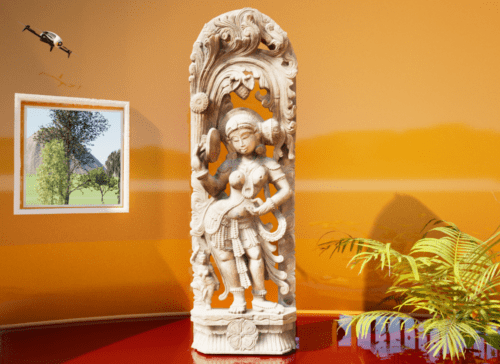In many regions of India, it is common to find a Ganesha sculpture placed outside homes, serving both religious and cultural purposes. This tradition is particularly popular in states like Maharashtra, Tamil Nadu, Karnataka, and parts of North India. The presence of these sculptures, whether small or large, signifies the worship of Lord Ganesha, the Hindu deity revered as the remover of obstacles and the harbinger of good fortune.
The tradition of placing Ganesha statues outside homes has deep roots in Hindu beliefs and practices. Ganesha is considered the god of beginnings and is often worshipped at the start of new ventures, including the construction of a home. This practice is tied to the belief that Ganesha will protect the household from negative influences and ensure prosperity and success.
In Maharashtra, the practice is especially prominent during the festival of Ganesh Chaturthi, where Ganesha idols are worshipped in homes and communities with great devotion. This tradition was popularized during India's freedom struggle when Lokmanya Tilak transformed Ganesh Chaturthi into a public festival to unite people against British rule. The festival has since become a symbol of cultural identity and religious fervor.
In Southern India, particularly in Tamil Nadu, Ganesha is also known as Pillaiyar, and his idols are commonly seen at the entrances of homes, shops, and even temples, reflecting his widespread veneration as a guardian deity.
The inspiration for this tradition is rooted in Ganesha's role as a protector and a deity who blesses devotees with wisdom, prosperity, and the removal of obstacles (reasons-for-placing-ganesha-idol-at-the-entrance) (Abirpothi) (Wikipedia).










